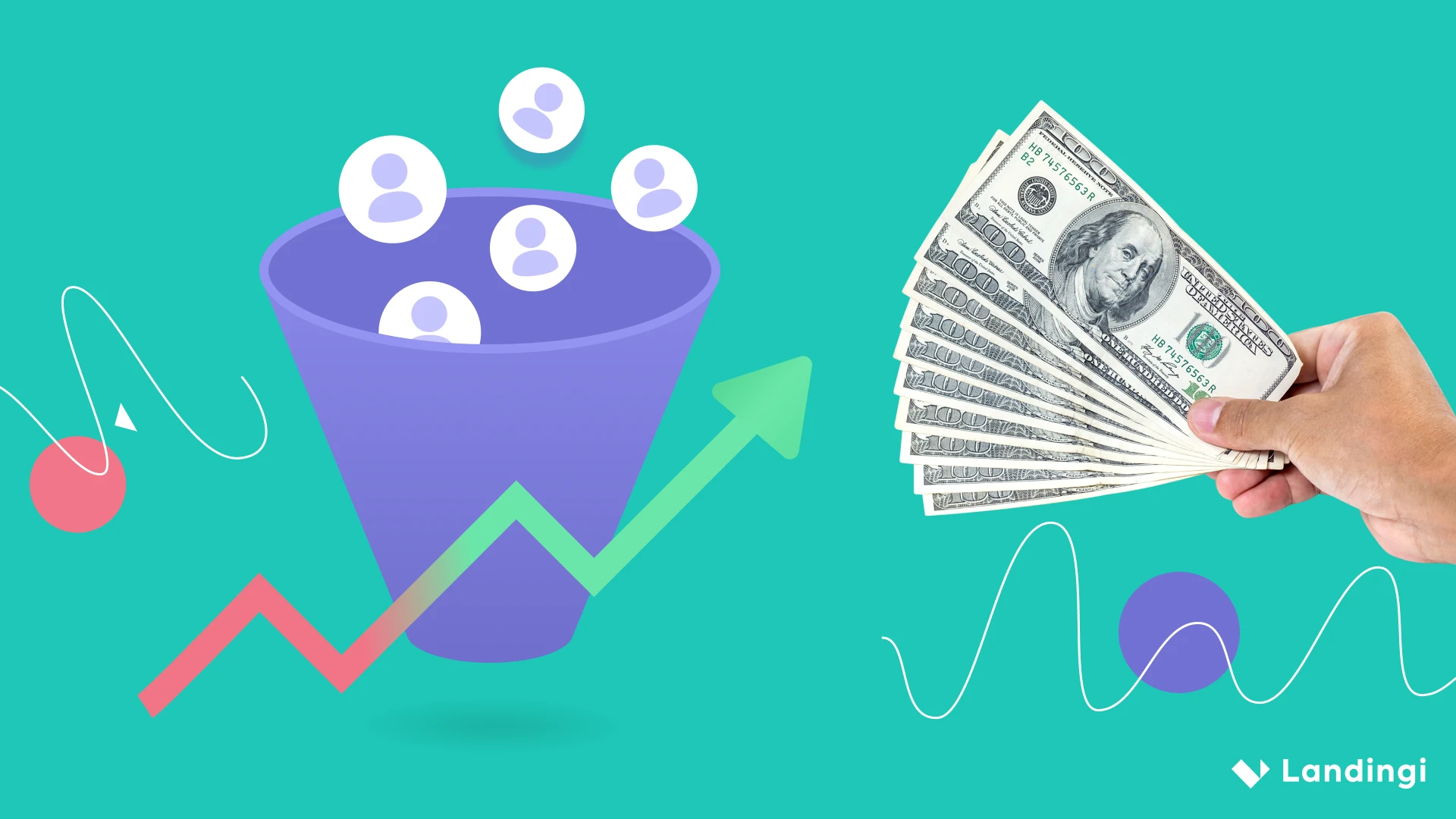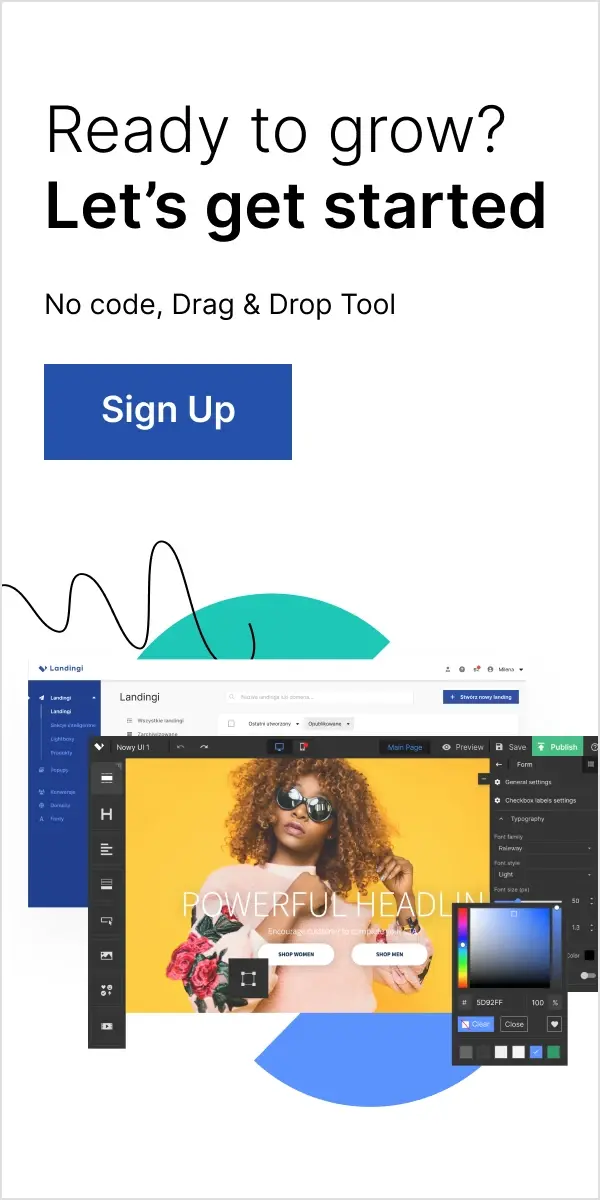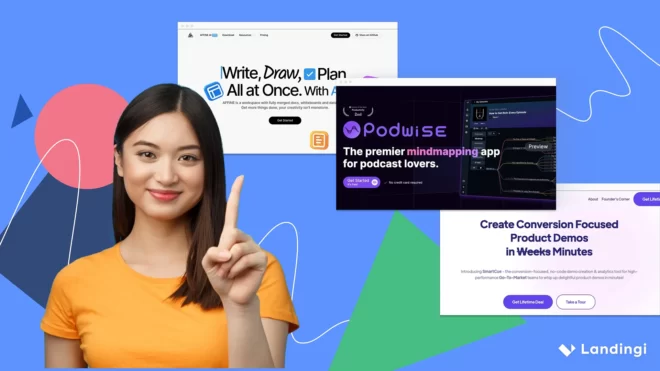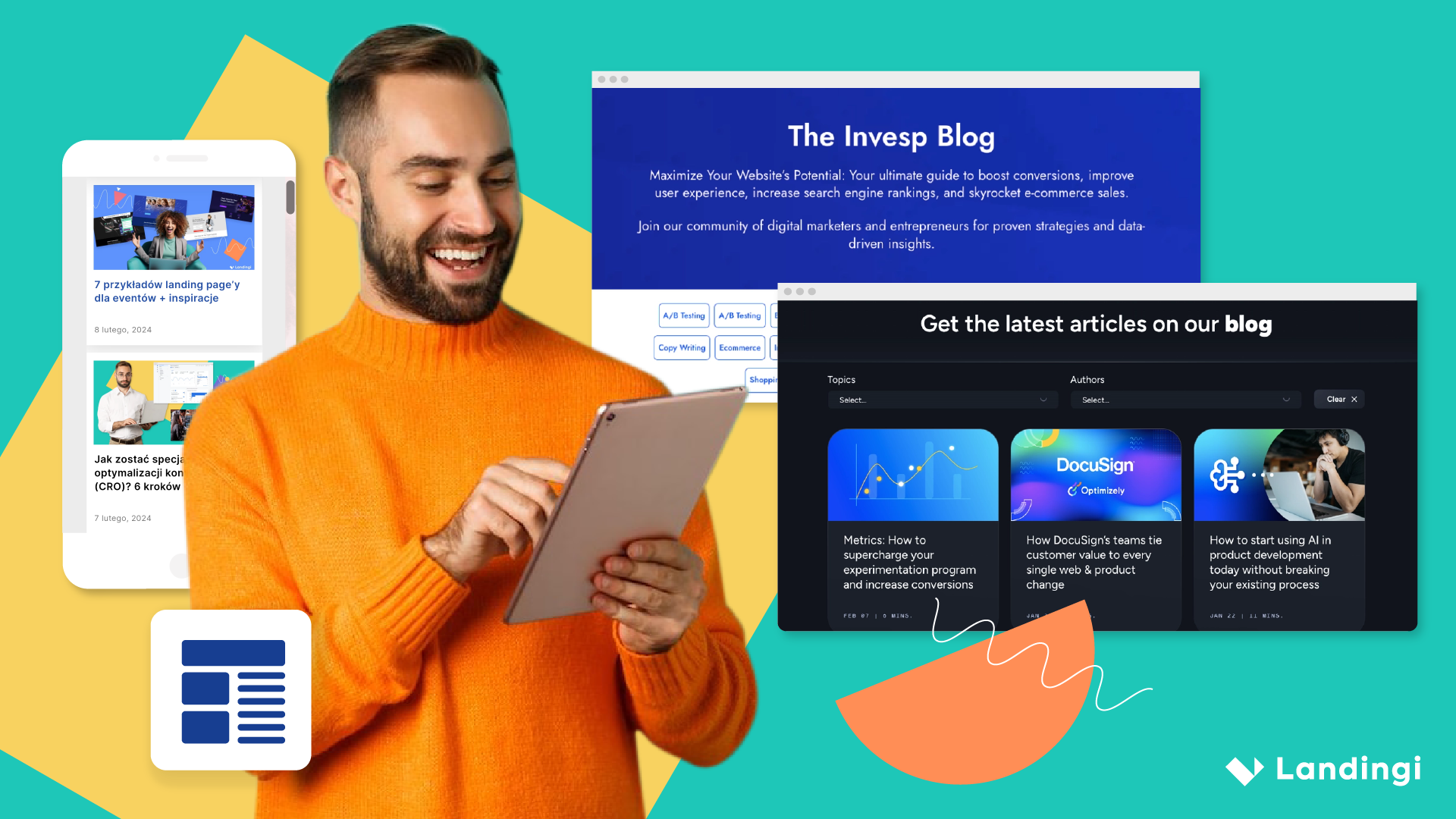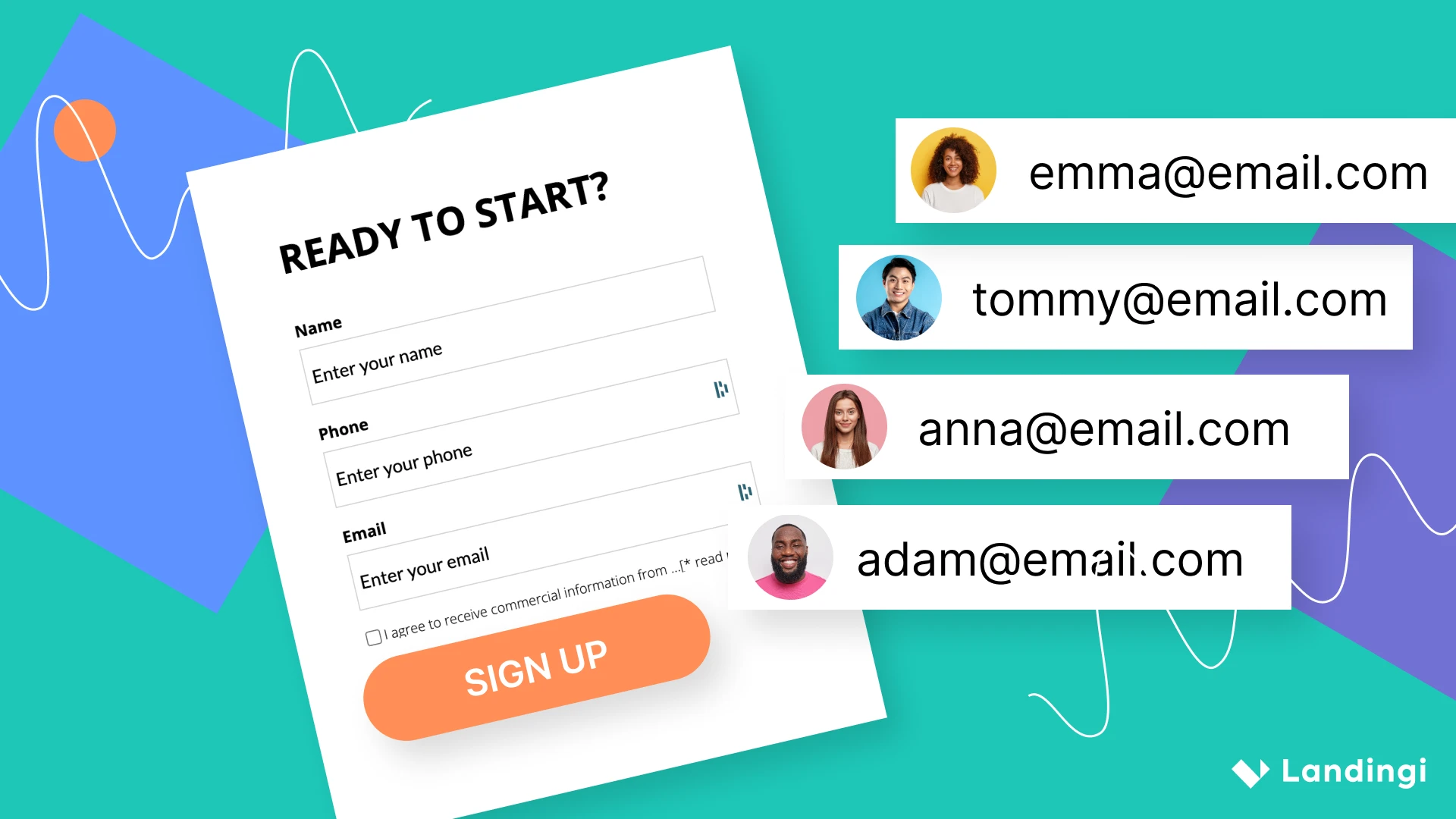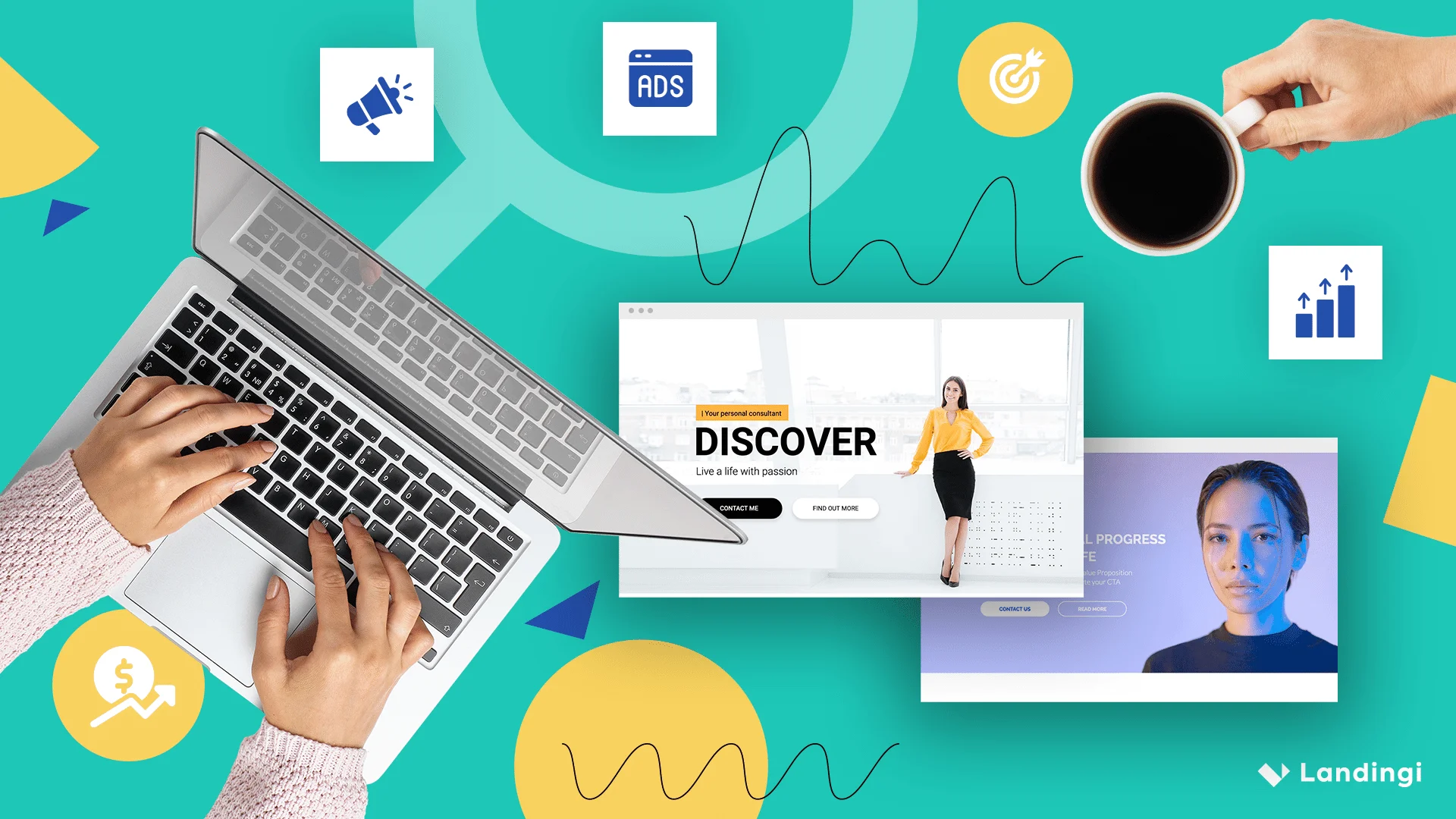Conversion funnels are where the magic of sales takes place. But not only sales. Also, other types of conversions are at stake: sign-ups, downloads, views, clicks, etc. The way you organize your conversion funnel largely determines how much you’ll be able to achieve with your business. And this is exactly why we are coming up with this article.
Below, you will find the step-by-step guide on how the conversion funnel should be optimized to get the most out of it, along with a few hints on which tools can be useful.
We’ll take a closer look at three essential steps in conversion funnel optimization:
- User segmentation.
- Site personalization,
- Data-driven user behavior analysis and testing.
Next, we’ll check a few tools that allow you to incorporate what you’ll learn into practice. We’ll cover the following ones:
Tool |
1. Google Analytics 4 |
2. Hotjar |
3. Optimizely |
4. AskNicely |
5. Landingi |
No further ado. Let’s kick off!
Make your sections smartable and let go of mundane manual tasks with Smart Sections! An easy way to manage bulk changes.
How to Implement Funnel Optimization for CRO?
To effectively implement funnel optimization for CRO, begin with a detailed analysis of your current conversion funnel to identify its main disadvantages (leading to lower conversion rates), followed by targeted marketing techniques for improvement at each stage.
You may do it on your own using professional tools (combined with your knowledge and skills) or hire a marketing funnel expert. Although the second choice generally leads to faster effects, no one knows your company and its needs as you do, so if you feel capable, give it a try – this guide will help you succeed. The first choice provides improved oversight of the entire process and helps you learn important skills for its future repetition.
3 Steps in Conversion Funnel Optimization
Before we dive deeper into the subject, we have to explain what exactly the conversion funnel is, as it is often confused with a marketing funnel (even by marketers!). The easiest way to explain the difference is by referring to the AIDA model. According to Hubspot, it “describes the four stages a consumer goes through before making a purchasing decision. The stages are Attention, Interest, Desire, and Action (AIDA). During these four stages, your content will ideally attract attention to your brand, generate interest in your product or service, stimulate a desire for it, and spur action to try or buy it” (A. Sellers, The AIDA Model: A Proven Framework for Converting Strangers Into Customers, 2021).
So, how does it apply to the two types of funnel?
Marketing Funnel
Marketing funnel represents the journey potential customers go through, from first becoming aware of your brand or product to the point of reaching a decision-making stage. It’s broader in scope than the conversion funnel and encompasses the initial stages of customer interaction with your brand:
- Attention/Awareness Stage: The top of the marketing funnel, where the goal is only to capture the potential customer’s attention. This could be through various marketing strategies like advertising, social media presence, content marketing, etc.
- Interest Stage: Once you have their attention, the next stage is to cultivate an interest in your products or services.
- Desire Stage: When clients are aware of your brand and show interest in your offer, it’s time to convince them that they need or want what you’re offering.
Conversion Funnel
Conversion funnel is more specific and focuses on the latter part of the customer’s journey, particularly on converting interest into actual sales or actions. The final stage of the AIDA model fits here:
- Action Stage: This is the point where the customer makes a decision – either making a purchase, signing up for a newsletter, downloading a whitepaper, etc. The conversion funnel is concerned with optimizing this process, making it as easy and compelling as possible for the customer to take the desired action.
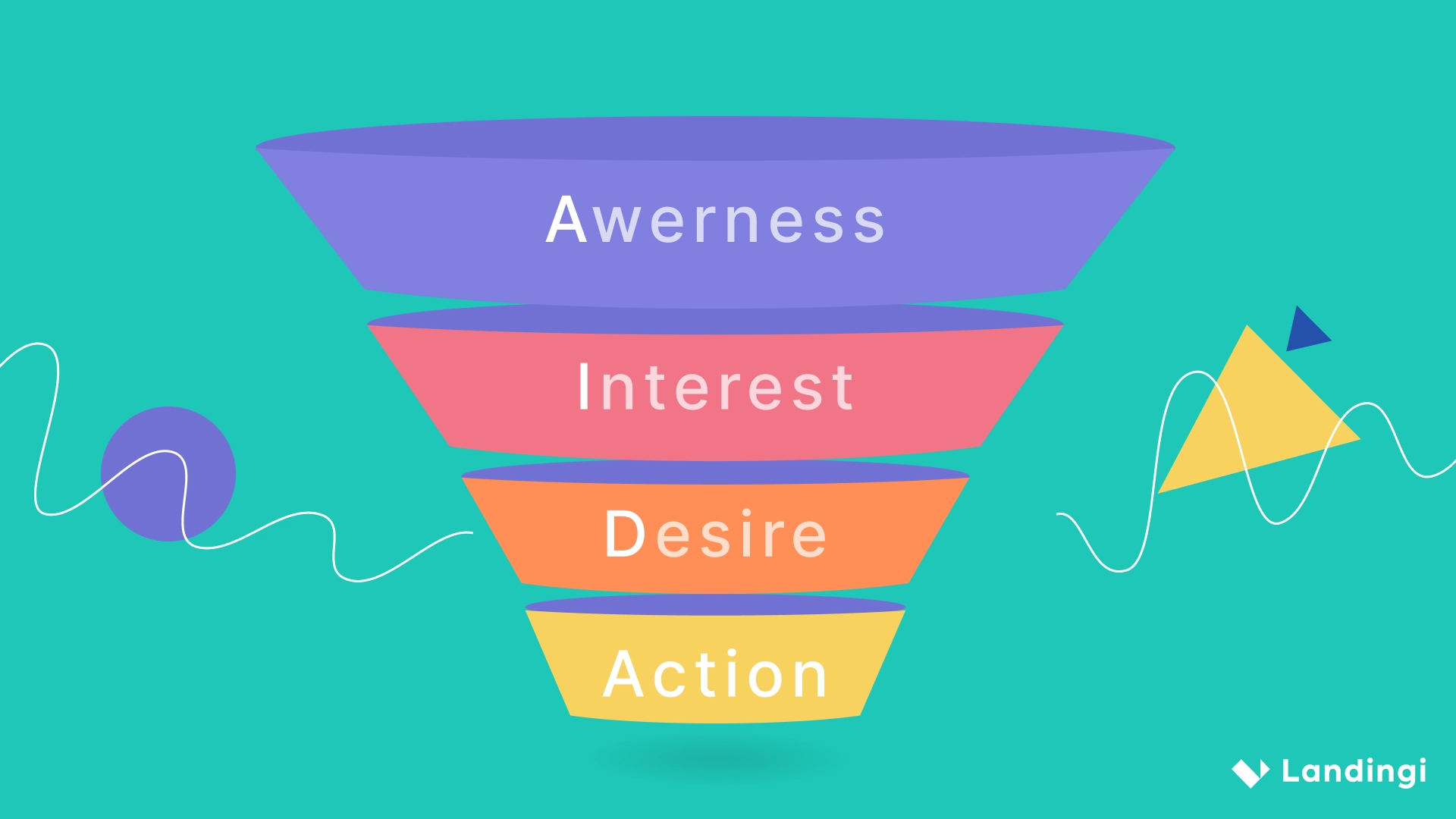
So, now we can go to the final stage of the customer journey and talk more about how to optimize it. Generally, the conversion funnel optimization process may be split into three essential steps.
Step 1: User Segmentation
To optimize your conversion funnel, you should start by asking yourself who your potential customers are and which specific groups they can be divided into. It’s paramount because it determines how the next steps will look.
Segmentation involves categorizing prospective customers into specific groups based on shared attributes, such as demographics, browsing behavior, or previous interactions with the brand. It allows for the creation of more personalized and relevant marketing messages, leading to higher engagement and conversion rates. For instance, a landing page for a pizzeria should differ from one for a B2B know-how provider, as prospective customers for both groups vary a lot from each other.
By understanding each segment’s unique journey and pain points, marketers can devise precise strategies to guide them towards conversion more efficiently. According to DMA, for e-mail campaigns, segmentation helps achieve up to a 760% increase in revenue (F. P. Kaur, Must Know Email Segmentation Statistics in 2023)!
Step 2: Site Personalization
The second stage is to personalize your web page to meet your audience’s expectations and address their most common pain points preventing them from conversion. It’s the right time to consider thoroughly a few key elements. Finally, your page should not only be easy on the eyes but also persuade users to take the desired actions, boosting your marketing efforts.
Headline
The headline should instantly capture attention and clearly convey the value proposition. It’s the first thing a visitor sees and sets the tone for their experience. Use powerful, action-oriented language that resonates with your target audience.
Copy
Personalizing copy can significantly improve the relevance and effectiveness of your content, leading to higher conversion rates. For example, if you sell tools for B2B clients, you should use concise, informative language and avoid excessive design. On the other hand, if your audience is B2C customers, your copy and layout are better off being vibrant and attractive, with simpler language that is more conversational than technical.
No matter the target audience, it’s always profitable to use the language of benefits. Try to craft targeted messages and hit your audience’s interests.
Beware of wordiness and blocks of text, as they usually impede focus on crucial elements and actions.
SEO
Once your copy is ready, don’t forget to perform search engine optimization to make sure your site will be easy to find throughout the web. More website traffic often means more conversions.
CTA
CTAs should be prominent, clear, and action-oriented. Use verbs that encourage immediate action, like “Get Started,” “Learn More,” or “Join Now.” Placement is of great importance – ensure CTAs are visible without scrolling and at key decision points in the funnel.
Design
Create a harmonious and effective layout that guides user attention. Use a thoughtful mix of colors that align with your brand identity while leveraging color psychology to evoke the desired emotional response and action.
The choice of fonts should enhance readability and contribute to the overall aesthetic, maintaining consistency across your site.
Visuals
Ignite customer engagement with videos and interactive elements like visualizations, infographics, or quizzes. But don’t exaggerate, as a webpage burdened with too many visuals can load slower and overwhelm users. Employ just enough visuals to capture the user’s engagement and foster an emotional connection, not more.
Navigation
Ensure that your website’s navigation is straightforward and user-friendly. Effective navigation improves the overall customer experience and helps visitors easily find what they are looking for (be it on a blog or an online store).
Feature Lists
Provide valuable content via feature lists. Clearly explain how each feature of your product benefits the user, helping to guide them through their buying decision process.
Social proof
Showcase customer testimonials and reviews, especially from paying customers. This social proof builds credibility and trust, which are crucial in converting new visitors into customers.
Incentives (free downloads, lead magnets, resources, freemium)
Offer incentives like free downloads or resources to engage visitors. These can be powerful lead magnets that encourage users to provide their contact information or try your product.
Discounts and Special Offers
Use discounts and special offers to create a sense of urgency and encourage visitors to make a purchase. Even a small promo may be the trigger for the final conversion (purchase, sign-up, etc.).
FAQs or Q&A
A comprehensive FAQ or Q&A section can enhance customer loyalty by providing clear and helpful information addressing potential concerns or questions customers might have.
It saves your support team time and, additionally, can positively influence the site’s SEO.
Demo
Providing a demo or trial version of your product allows potential customers to experience its benefits firsthand, which can be a deciding factor in their purchase decision.
Product recommendations
Personalized product recommendations can enhance the shopping experience, making it easier for customers to find items that suit their needs and preferences.
Furthermore, displaying recommended products on the blog may cause your visitors to move to your online shop – one step closer to the purchase.
Info: According to Barilliance, recommendations account for up to 31% of ecommerce sites’ revenue (S. Serrano, [Guide] Personalized Product Recommendations Tactics for Profits, 2023)
Countdown Timer
Implement a countdown timer for limited-time offers to instill a sense of urgency. This can motivate visitors to take action before time runs out.
Partnerships and Success Metrics
Highlight partnerships and success metrics to demonstrate the effectiveness and credibility of your product or service. This information can reassure potential customers of your product’s value. It proves to be highly effective for B2B clients.
Support (Chatbots, human support)
Offer comprehensive support options, including chatbots for quick queries and human support for more complex issues. Ensure your future clients your support is available at different stages of the sales process as well as while using a product after the purchase. Provide support through multiple channels to meet the expectations of various client groups.
Step 3: Data-driven User Behavior Analysis and Testing
It’s time to focus on data-driven user behavior analysis and testing. This involves closely monitoring how your target audience interacts with various elements of your site. Utilize analytics tools to track user actions and engagement patterns, helping you understand what drives conversions and where potential drop-offs occur. Key metrics like page views, bounce rates, and conversion rates are essential to watch.
Once you have this data, initiate A/B testing to refine elements like page layouts, navigation, and visual design. Each test should aim to improve user experience and increase conversion rates. For instance, testing different landing pages from your email marketing campaigns can reveal which designs and messages resonate best with your audience.
Analyze the results from these tests to gain insights into user preferences and behaviors. This continuous cycle of testing, analyzing, and refining, based on real user data, ensures that your site evolves in a way that consistently meets the needs and expectations of your audience.
Get 111 Landing Page Examples—The Ultimate Guide for FREE
What are the Best Tools for Conversion Funnel Optimization?
The best tools you can optimize your conversion funnel with include Google Analytics for comprehensive tracking, Hotjar for visual insights, Optimizely for A/B testing, AskNicely for feedback collection, and Landingi for optimizing landing pages. These tools cater to the nuanced needs of marketing adepts. Let’s explore them a bit closer.
#1 Google Analytics
Google Analytics (especially GA4) is valued for its ability to identify bottlenecks in the conversion process.
Audience Segmentation
GA4 offers advanced segmentation tools to create detailed audience segments based on behavior, enabling personalized marketing strategies that can lead to higher conversion rates.
Based on data gathered this way, you can, for example, create landing pages dedicated to specific groups in terms of their content, design, offer type, payment methods, etc.
Mapping Customer Journey
GA4 can be highly beneficial due to its advanced tracking and analysis capabilities. It offers a more holistic view of the customer journey across various devices and platforms, unlike its predecessors. This comprehensive tracking enables marketers to gain deeper insights into user behavior and preferences, helping to identify which stages of the conversion funnel are most effective. The data analyzed with GA4 can then be used to design detailed conversion funnel architecture throughout all its stages.
Enhanced E-commerce Tracking
It’s also noteworthy that properly configured GA4 is able to provide detailed insights into consumer shopping behavior, tracking metrics like product (or service) views, add-to-cart actions, and purchases. These insights are crucial for identifying which products are performing well and where users drop off in the shopping process.
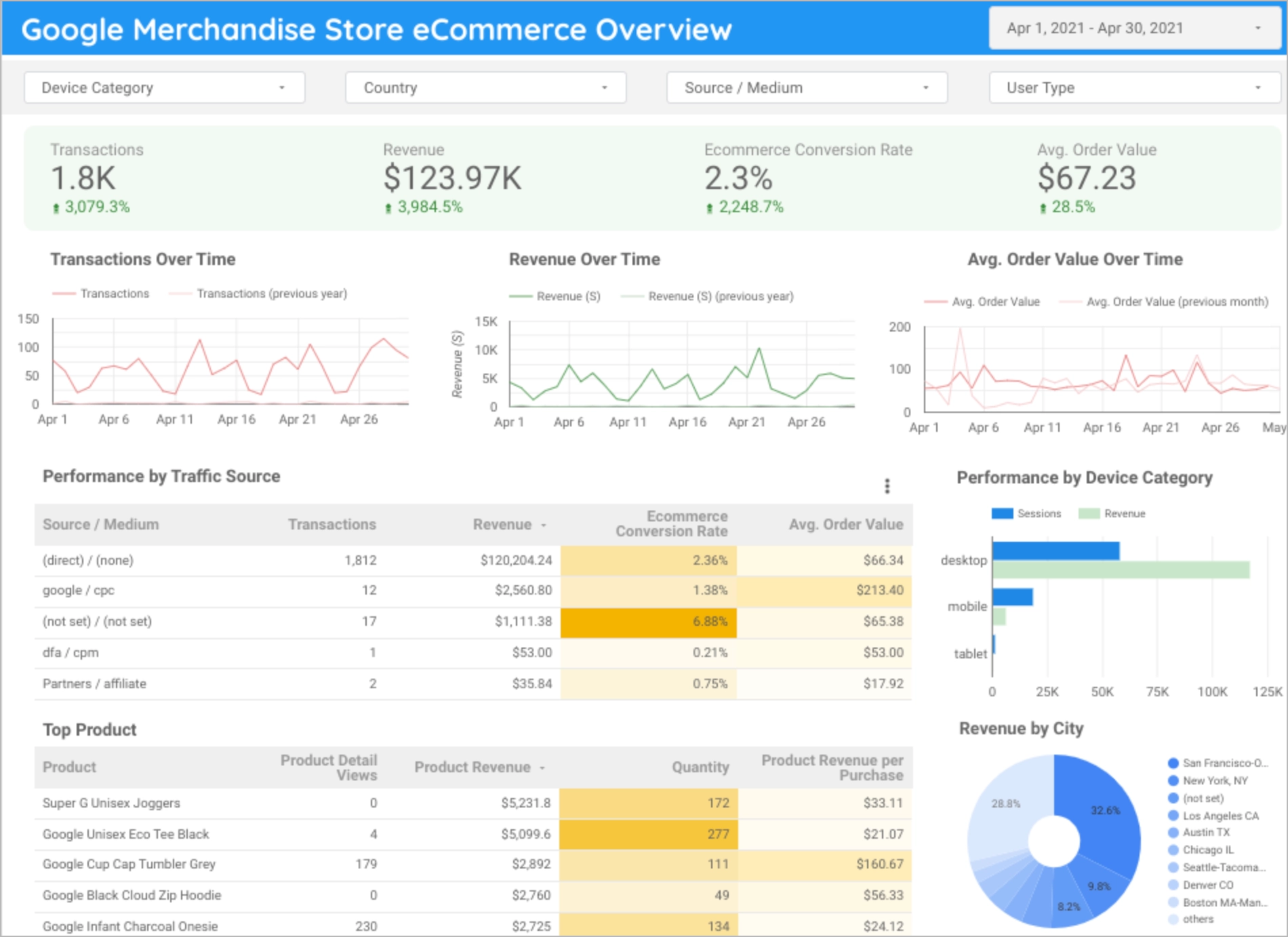
Predictive Metrics
Leveraging machine learning, GA4 provides predictive metrics like purchase probability. This can be used to target users who are most likely to convert, optimizing marketing efforts and resources aimed at this specific group. It results in getting the most out of the sales funnel.
#2 Hotjar
Hotjar’s detailed user behavior analytics, including heatmaps and session recordings, are instrumental in understanding and optimizing each stage of the conversion funnel.
Heatmaps
Hotjar’s heatmaps provide a visual representation of where users click, move, and scroll on a webpage. This helps identify which areas of the page are attracting the most attention and engagement, allowing for optimization of key elements like call-to-action buttons or links to improve the conversion rate.
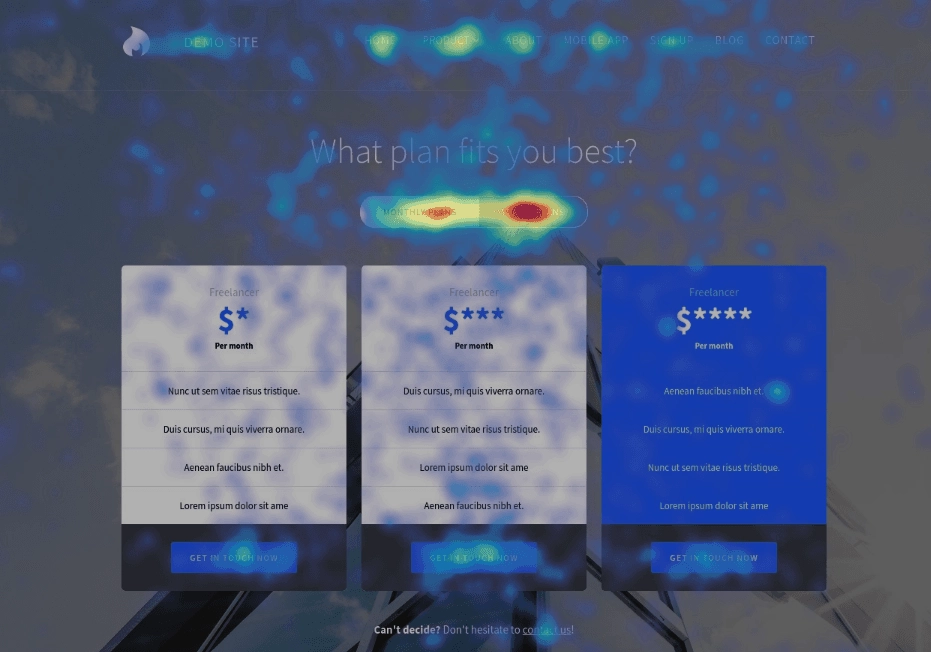
Visitor Recordings
This feature records actual user sessions, showing how visitors navigate through a site. By observing real user interactions, businesses can identify usability issues, confusing navigation, or friction points that might be causing drop-offs in the conversion funnel.
Feedback Polls and Surveys
Extra point for tools to directly gather feedback from users through polls and surveys. This feature can be used to understand user needs, objections, or suggestions, which are first-hand delivered. Providing such valuable data allows to optimize the website and conversion funnel based on user feedback.
Incoming Feedback
This is another Hotjar’s great feature for feedback collection. It enables users to give instant opinions on specific elements of a webpage. It’s useful for quickly identifying and addressing issues or preferences of users, enhancing the overall user experience and potentially boosting conversion rates. Below, you can see this feature in use (box on the right).
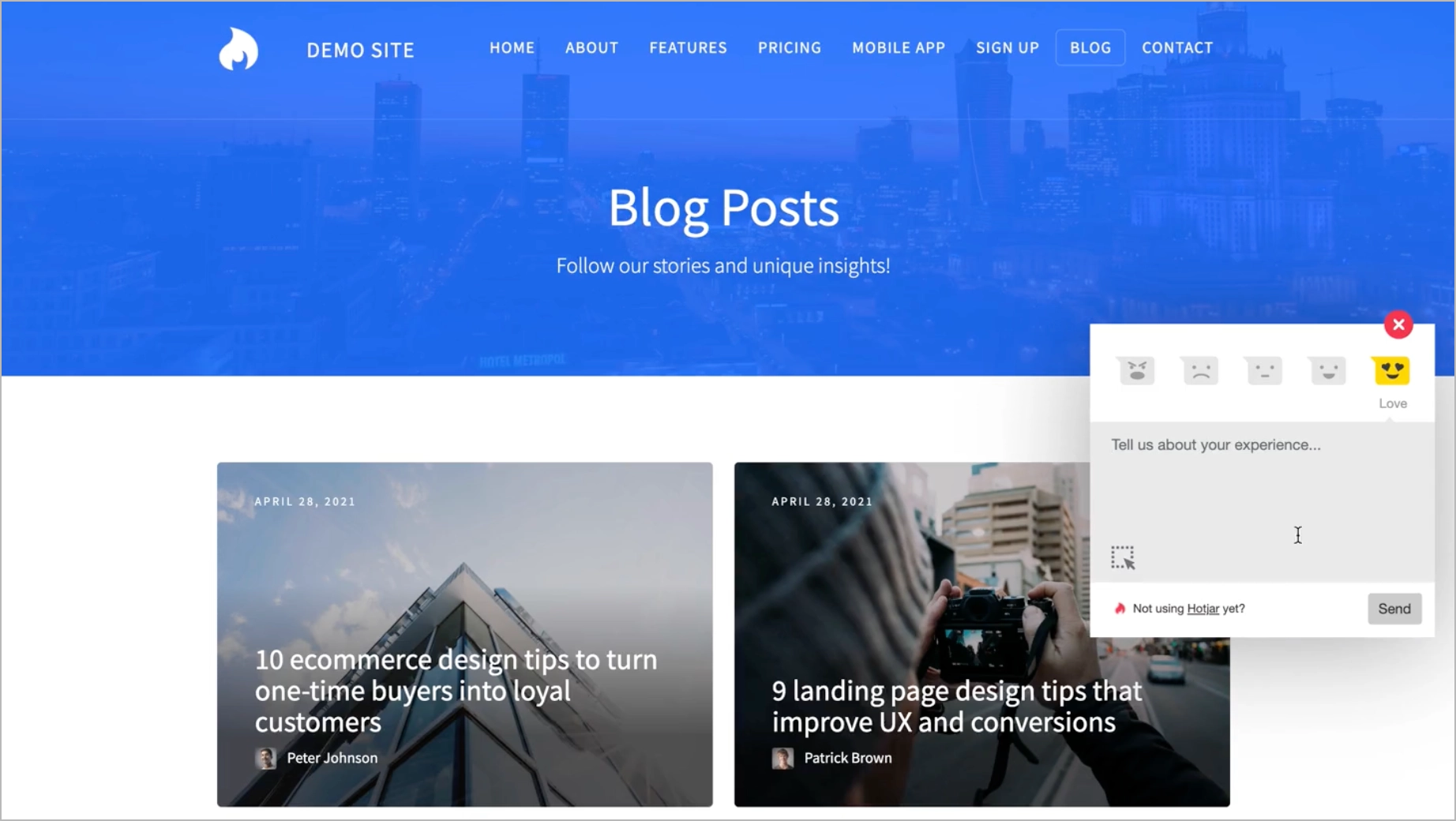
#3 Optimizely
The platform’s strength lies in enabling marketers to test and choose the most effective website elements. Their portfolio is really outstanding and includes many famous brands like Skanska, Panasonic, American Express, MailChimp, and Atlassian.
Experimentation and Testing
Optimizely is known for its powerful web experimentation capabilities, allowing marketers to A/B test digital assets at scale using real-world data. This means that variations of web pages, landing pages, or any digital content can be tested to determine which version performs best in terms of user engagement, conversion rates, or other key performance indicators (KPIs).
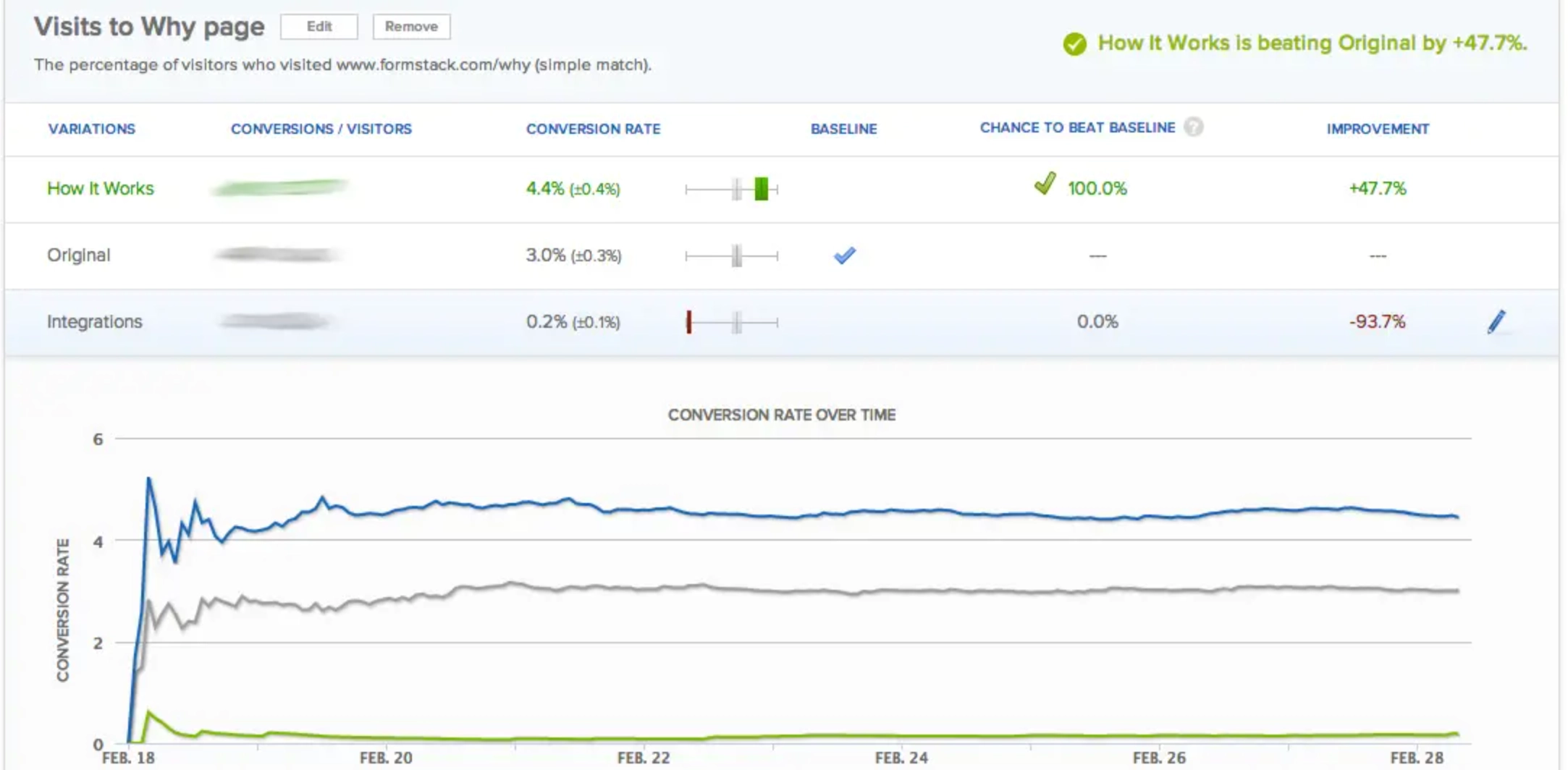
Check also some of the best Optimizely alternatives in A/B testing.
Content Marketing Management
You can use Optimizely to publish content in various channels with one tool, avoiding neverending copy-paste stories.
Moreover, the platform allows you to store what you created, which is very handy, for example, if you are going to reuse or update your previous creations.
Finally, you can measure content performance all the time with predefined metrics or customized ones defined yourself. This way, you can constantly improve content pieces (articles, posts, site copy, etc.) with lower performance to maximize conversions.
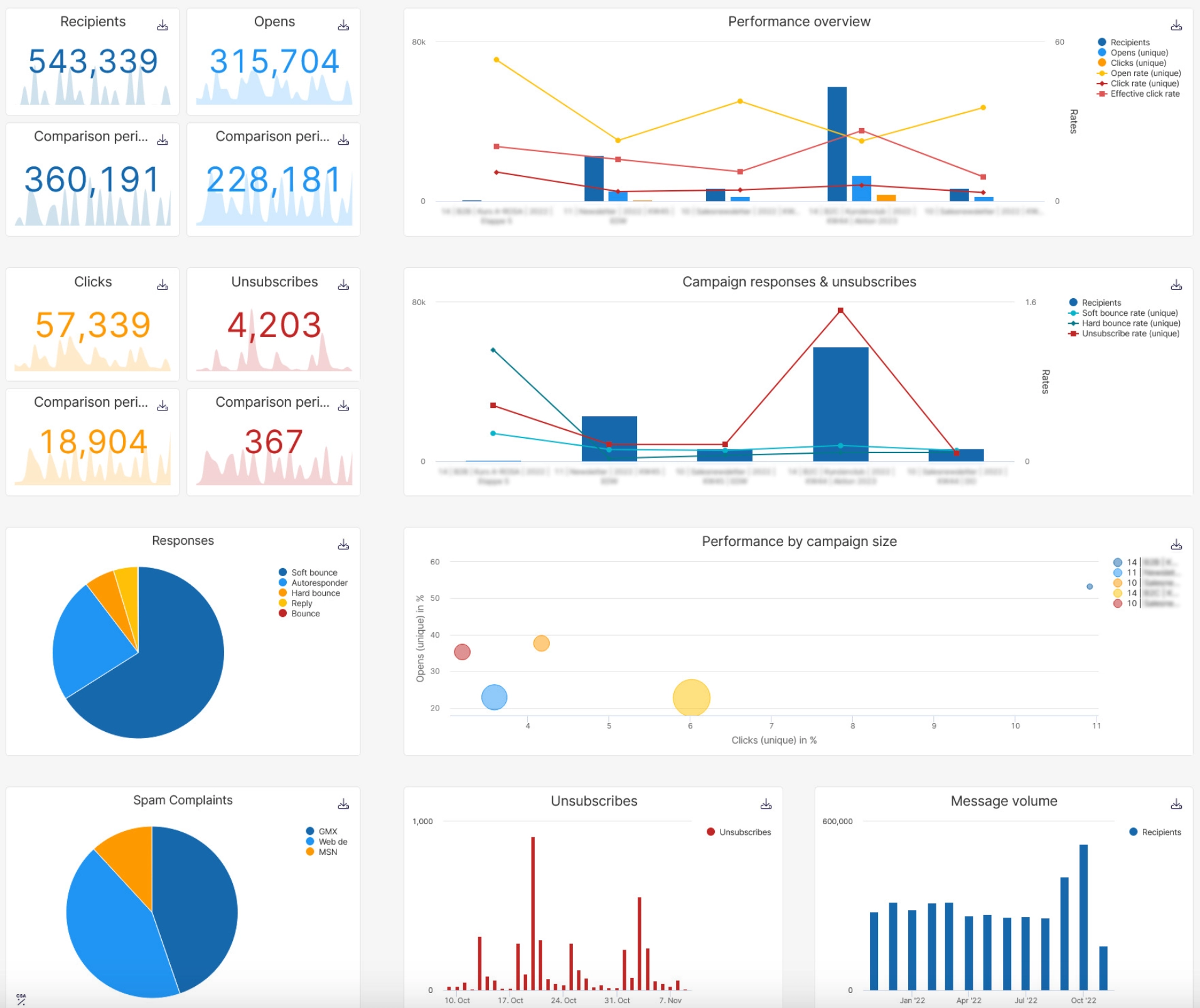
Centralized Campaign Planning
In the end, the platform allows you to organize your campaigns from start to finish with a centralized system that includes detailed briefs, specific task management for each campaign, and well-structured calendars. All of this is framed within one tool for efficiently managing and prioritizing sudden requests, ensuring a cohesive and uninterrupted marketing workflow.
#4 AskNicely
The above-mentioned app is quite useful for gathering customer feedback by, among others, customizable surveys that can be distributed via email, SMS, or websites. It can improve individual sales as well as build up customer loyalty (long-time perspective).
Real-Time Feedback Collection
AskNicely enables businesses to collect customer feedback immediately after a purchase or a customer service interaction. This timely collection of data ensures that feedback is relevant and fresh, allowing for quicker responses to customer needs and preferences. Check below a few potential surveys generated with the tool. Clearly, there is an abundance of choices when it comes to structure and layout.
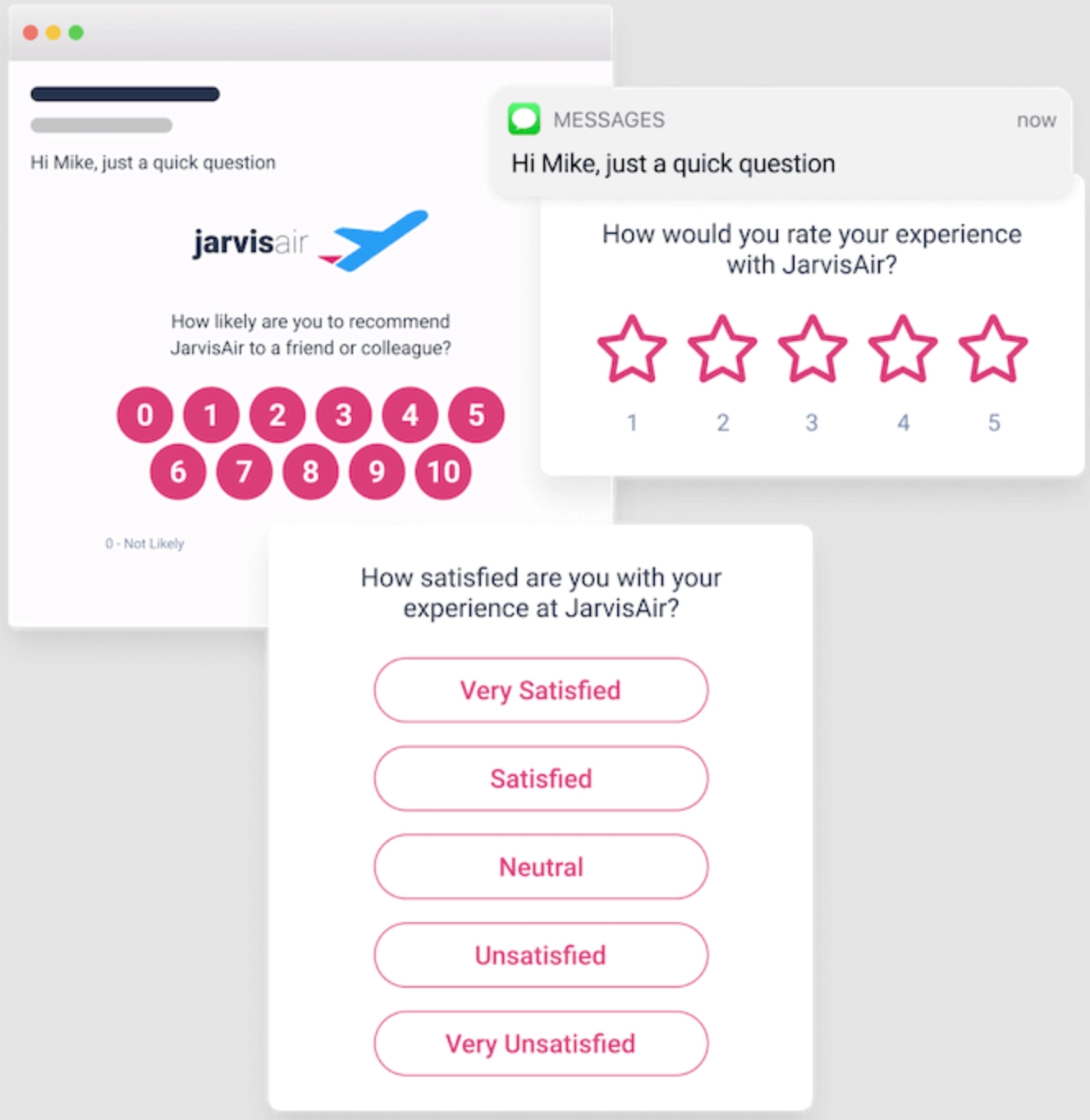
Actionable Insights
The tool not only gathers feedback but also provides insights that can be immediately acted upon. This saves your time on analysis and allows you to incorporate improvements rapidly.
Multichannel Feedback Capture
AskNicely supports feedback collection through various channels, including email, SMS, and websites. This multichannel approach increases the likelihood of capturing a broad range of customer opinions and experiences, which is essential for understanding different customer journeys through all conversion funnel stages.
#5 Landingi
Landing pages, which are typically at the end of the sales funnel, should be optimized in regard to their design, copy, and technical performance.
In Landingi, you can create a landing page based on over 300 conversion-driven templates and perfect it with tools like page editor, SEO generator, form builder, and more.
The platform is also valued for a range of highly effective tools for improving conversion funnels.
EventTracker
The first tool (and one that competitors are currently missing) is the built-in analytics called EventTracker. It brings valuable data on user behavior (clicks, scrolls, views, and more) to your doorstep, which allows you to make data-driven decisions.
Combined with Landingi’s A/B testing capabilities, it has the potential to be a real game-changer for your business.
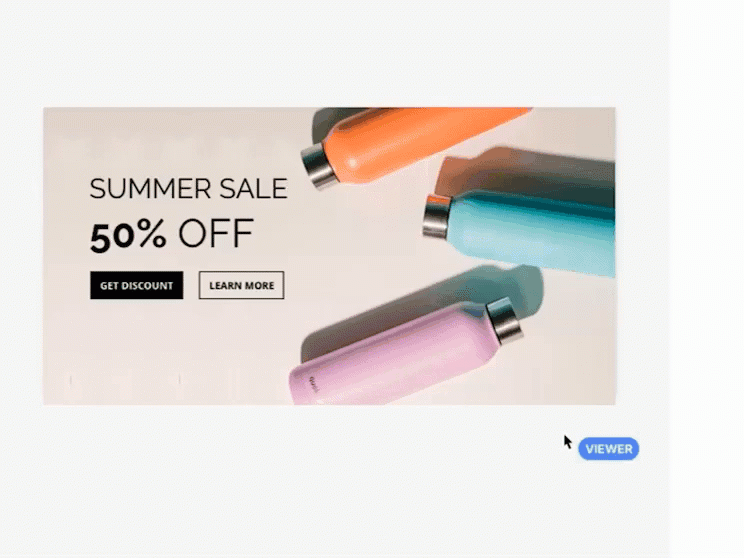
Pop-Ups
Another conversion booster is a pop-up builder.
Pop-ups are often overused, but they work great if you are aware of the following principal rule: the more advanced the funnel stage pop-ups appear on, the greater the effects they bring. Of course, at the same time, they should convey a relevant offer and be visually appealing, but I guess you’ve heard about it a thousand times earlier.
When used strategically, pop-ups can interrupt a visitor’s usual browsing pattern, leading to higher engagement and conversion rates.
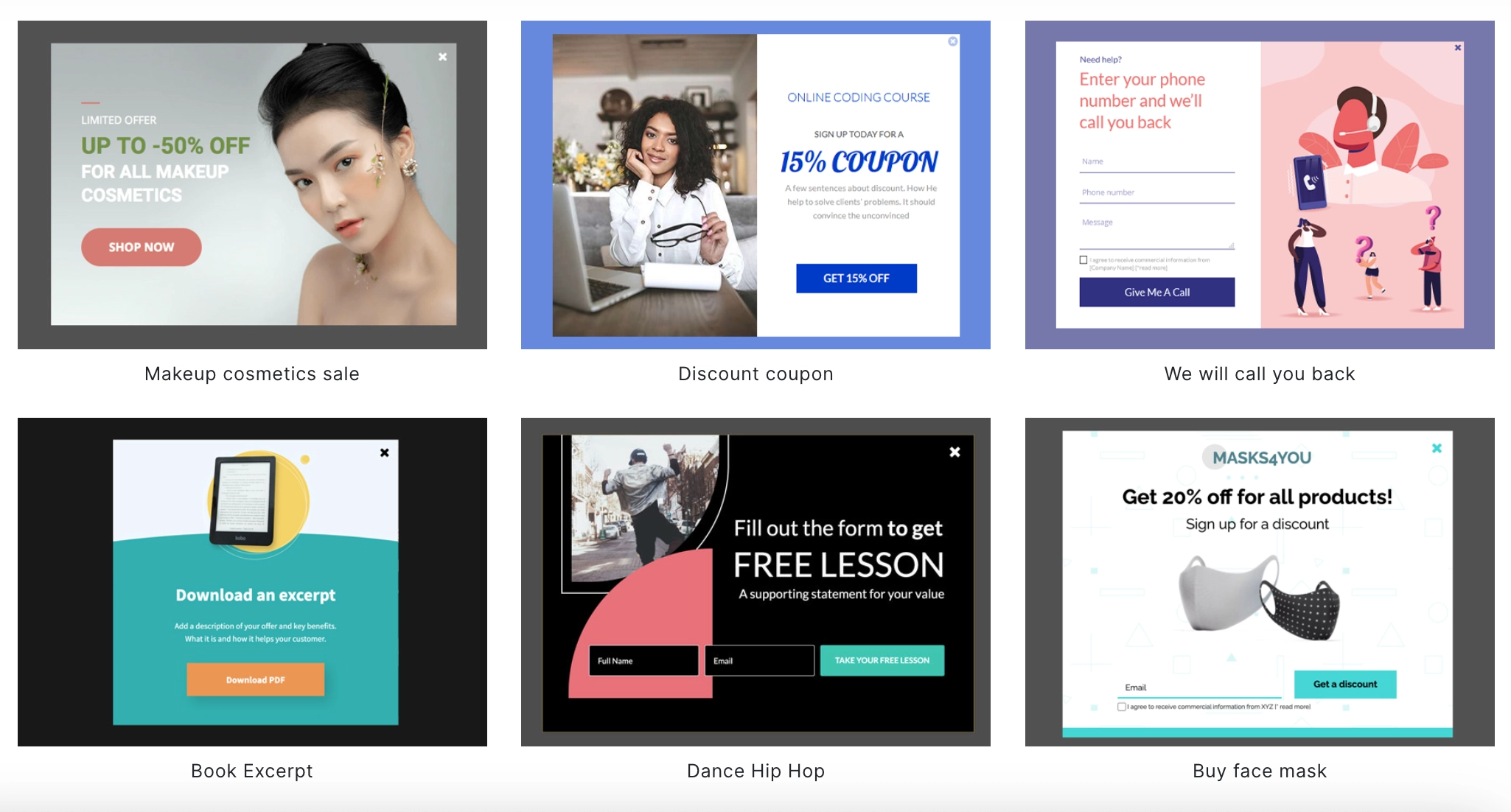
Counter Widget
A counter widget, such as a countdown timer, creates a sense of urgency and scarcity, compelling visitors to act quickly to avoid missing out on offers or limited opportunities. This psychological trigger can significantly increase the likelihood of visitors making a decision, such as a purchase or sign-up.
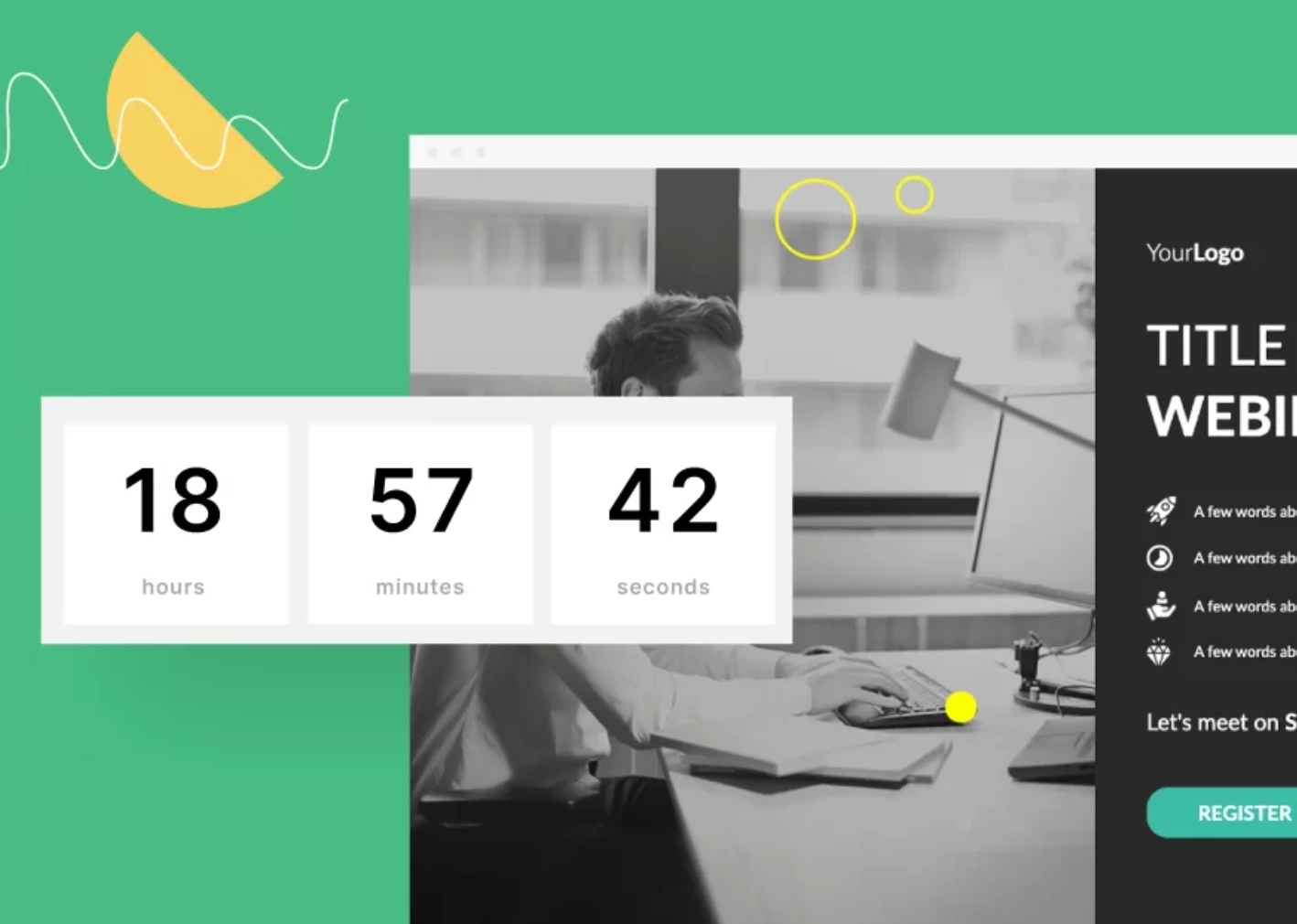
AI Assistant
AI copy assistant saves you lots of time usually spent on creating content. It generates all the copy for your pages based on some basic information you provide. Although it’s capable of working with minimal data, richer input about brand value, targeted persona, and preferred communication style yields more precise messaging. It’s based on the world star in the business: ChatGPT.
FAQ about Conversion Funnel Optimization
Need some basics about CRO? We’ve put the most essential definitions and details in the Q&As below. Dive in!
What is Conversion Funnel Optimization?
Conversion funnel optimization involves fine-tuning the final part of the customer journey that ends in a conversion, unlike the wider scope of a marketing funnel. In other words, it means efforts put in to persuade all your website visitors who reached (at least) the awareness stage in the marketing funnel to convert.
What is Conversion Rate Optimization?
Conversion Rate Optimization (CRO) is the systematic process of increasing the percentage of website visitors who take a desired action, such as making a purchase or filling out a form, by testing and improving various elements of the website or landing page.
What is Conversion Optimization Strategy?
A conversion optimization strategy is a comprehensive plan aimed at enhancing various aspects of a website or marketing campaign to increase the percentage of visitors who reach the last point on the conversion path, which can be making a purchase, subscribing to a newsletter, filling out a form, or whatever you set.
What is Conversion Funnel Analysis?
Conversion funnel analysis is the detailed examination of conversion funnels using key metrics to understand where and why potential customers drop off or complete the desired action, enabling targeted improvements.

